#greco roman
Explore tagged Tumblr posts
Text
In the French version of the Enemy of my Enemy clip, Smeech calls Jinx "Little Blue Fury" instead of "Baby Blue." In Greco-Roman mythology, furies are the inescapable godess of vengeance that are born of the blood of the murdered and wronged. They resemble winged women with snake-like hair and are strongly associated with curses. Coming up from the underworld, they rise to earth to hunt and punish the wrongdoers. They believe that blood is repayed in blood, continuing an endless cycle of violence and vengeance.
Jinx is the Fury born of the blood of Powder, of Silco, and the other victims of Piltover's brutal oppression. She has come from the undercity, the place below earth, to enact brutal revenge on Piltover and its inhabitants and bring justice to Zaun. This is the reason she was framed with wings.

#jinx lol#arcane jinx#jinx arcane#jinx#powder#powder arcane#arcane powder#silco#the furies#female furies#baby blue#little blue furie#le petit furie bleue#character analysis#analysis arcane#arcane analysis#greek mythology#roman mythology#mythology and folklore#greco roman#fallen angel#angel wings#wings#jinx analysis
524 notes
·
View notes
Text
2,000-Year-Old Fayum Portraits from Roman Egypt: also known as "mummy portraits," these funerary paintings were often fastened to the coffins of the people they depicted

Above: Fayum portrait of a woman from Roman-occupied Egypt, c.100-110 CE
Fayum portraiture was a popular funerary practice among the upper-class families of Roman Egypt from about 50 CE to 250 CE. Given the high mortality rates for children during this period, many of these portraits depict children and youths, but adults were often featured, too.
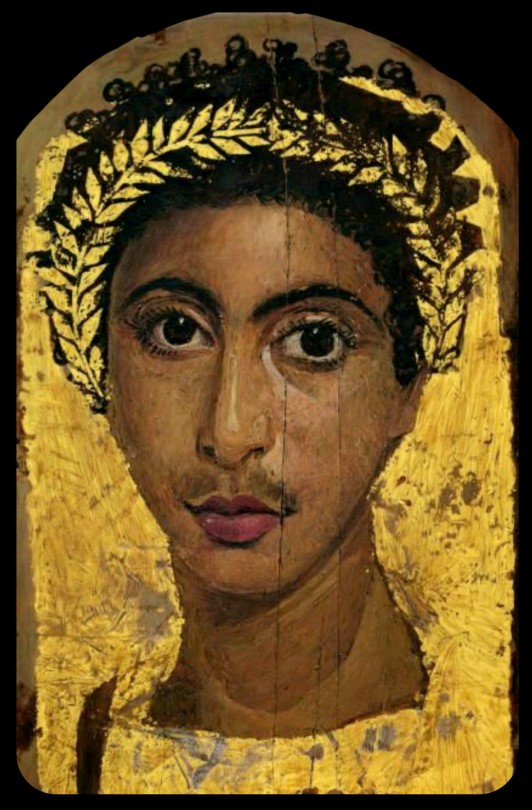
Above: portrait of a youth wearing a golden wreath, c.130-150 CE; the wreath and the background of the portrait are both gilded
The population of the Faiyum Delta, where most of these portraits were found, largely contained individuals with both native Egyptian/North African and Greek heritage. The Greek lineages can be traced back to the Ptolemaic period, when the Greeks gained control of Egypt and began to establish settlements throughout the region, gradually leading to a cultural diffusion between the Greek and Egyptian populations. The Romans eventually took control of Egypt in 31 CE, absorbing it into the Roman Empire and colonizing much of North Africa, but the demographics of the Faiyum Delta remained largely unchanged.

Above: portrait of a man with a mole on his nose, c.130-150 CE
Many of these Fayum portraits reflect the same blend of ethnic and cultural roots, depicting individuals with both Greek and native Egyptian heritage (a claim that is supported by both archaeological and genetic evidence). Some portraits may also depict native Egyptians who did not have any European ancestry, but had been integrated into Greco-Roman society.

Above: portrait of a bearded man, c.170-180 CE
These representations of native Egyptians provide us with unique insights into the actual demographics of Roman-occupied Egypt (and the ancient world at large). Non-European peoples are rarely included in depictions of the classical world; it's also interesting to see the blend of cultural elements that these portraits represent.
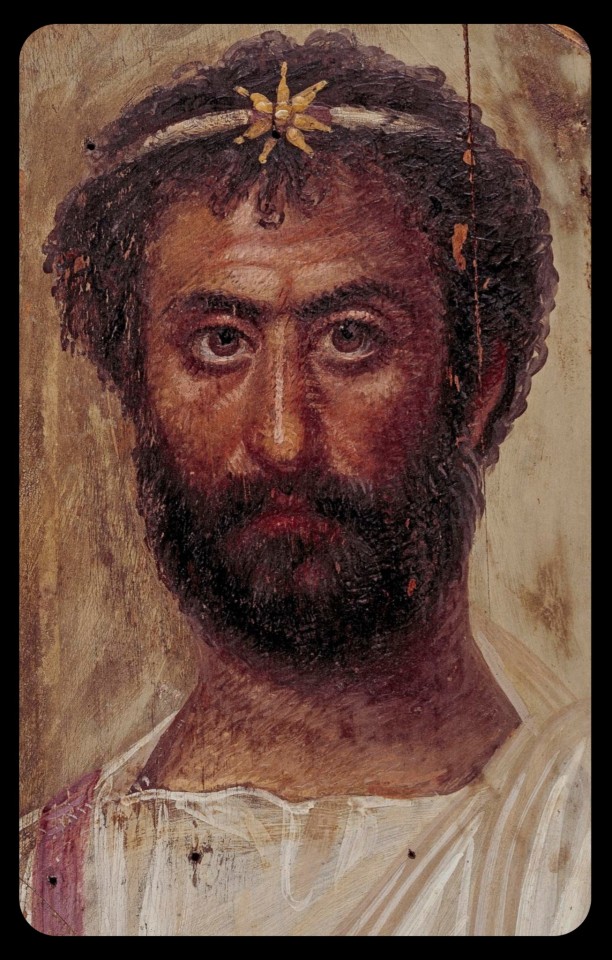
Above: portrait of a priest of Serapis, c.140-160 CE; the man in this portrait is shown wearing a fillet/crown that bears the seven-pointed star of the Greco-Egyptian god, Serapis
As this article explains:
In the 1800s and early 1900s, Western art historians didn’t know what to make of these portraits. Scholars of Roman history labeled them Egyptian. Scholars of Egyptian history labeled them Greco-Roman. These binary academic classifications failed to capture the true complexity of the ancient (or, indeed, modern) Mediterranean. In reality, Fayum portraits are a syncretic form, merging Egyptian and Greco-Roman art and funerary practices. They reflect the cosmopolitanism of both Roman and Egyptian history.

Above: portrait of a man, c.80-100 CE (left); portrait of a bearded officer, sometimes referred to as "Perseus," c.130-175 CE (right)
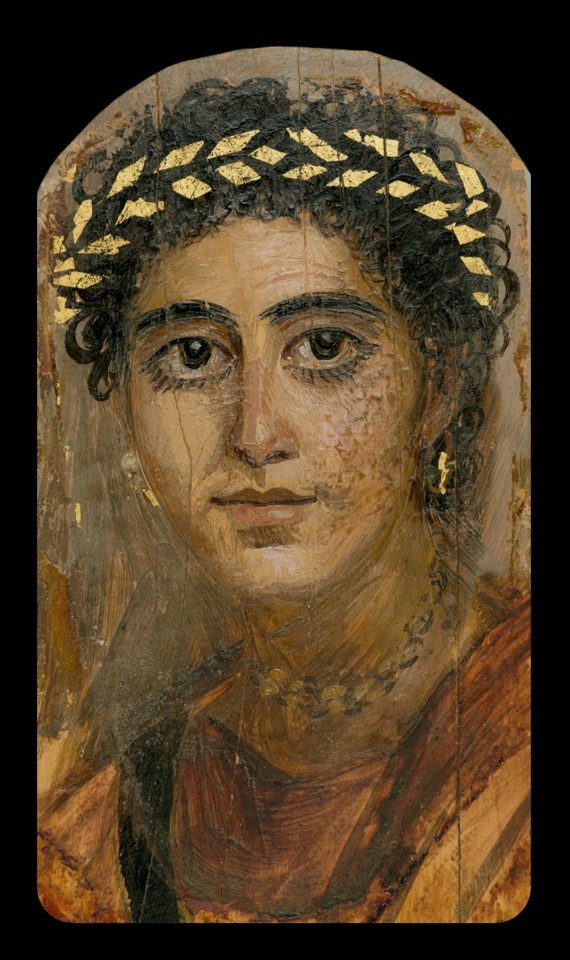
Above: portrait of a young woman in red, c.90-120 CE
Nearly 1,000 of these portraits are currently known to exist.
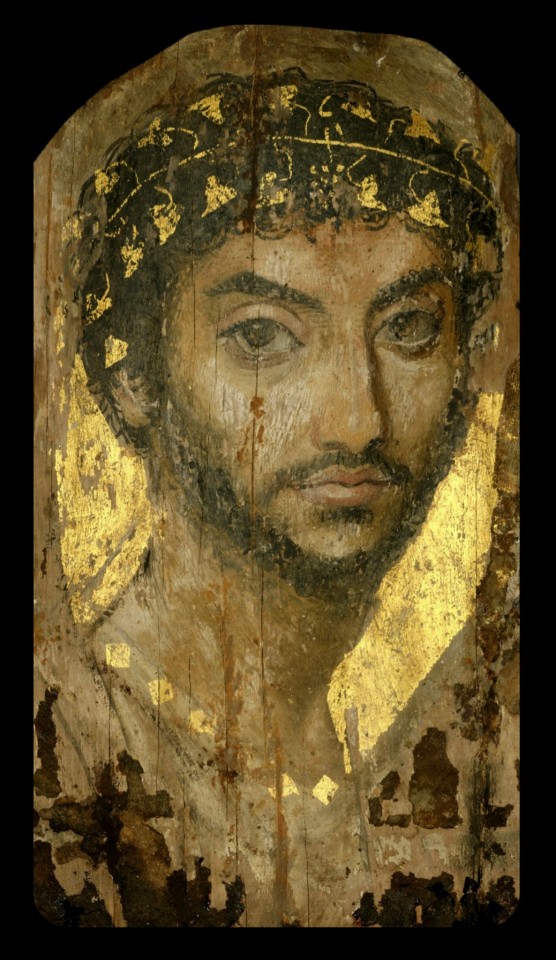
Above: portrait of a man wearing a gilded ivy wreath, c.100-150 CE
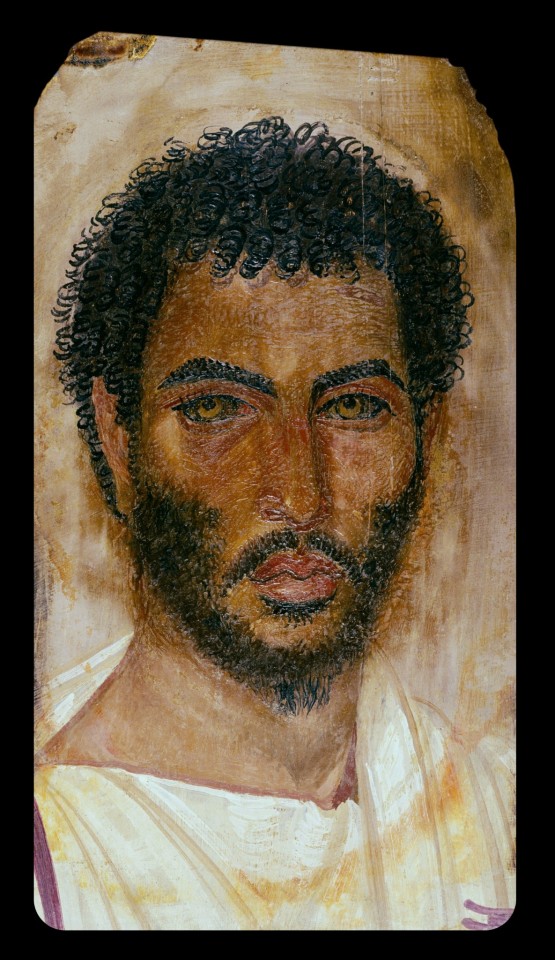
Above: portrait of a bearded man, c.150-170 CE
Sources & More Info:
Curationist: Fayum Portraits
Harvard Art Museums: Giving the Dead their Due: an Exhibition Re-Examines Funerary Portraits from Roman Egypt
Getty Museum: APPEAR Project
Getty Museum: Faces of Roman Egypt
National Geographic: Ancient Egypt's Stunning, Lifelike Mummy Portraits
The Athens Centre: The Myth of Whiteness in Classical Sculpture
Forbes: Whitewashing Ancient Statues: Whiteness, Racism and Color in the Ancient World
#archaeology#artifact#anthropology#history#ancient history#art#fayum portraits#roman egypt#ancient rome#ethnography#painting#portrait#north africa#people of color#egypt#religion#greco roman#greek#classical antiquity#fayum#mummy portraits#romano egyptian#representation
419 notes
·
View notes
Text

commission of my oc nia
188 notes
·
View notes
Text

| Inlay of the god Thoth striding with the feather of Ma'at | 🪶 {Late Period-Ptolemaic period, Hermopolis, on display at the Met Museum}
#ancient egypt#ancient art#inlay#late period#ptolemaic#djehuty#thoth#egypt#egyptology#egyptian#greco roman#kemet#kemetic
82 notes
·
View notes
Text
I had seen a joke about Orpheus and Eurydice, but looking back, I don't laugh so much anymore
#orpheus#eurydice#orpheus and eurydice#hadestown#hades god of the underworld#tragedy#humor#greek myth memes#mythology#greek mytology#ancient greece#underworld#roman mythology#greco roman#percy jackson#the song of achilles#lore olympus
3K notes
·
View notes
Text



quick kars sketch
#jjba#jojo's bizarre adventure#jojo no kimyou na bouken#jjba fanart#jojo fanart#sdashq#jojo kars#jjba kars#kars#kars jjba#kars jojo#jjba part 2#jjba battle tendency#jjba villains#ancient history#greek history#roman history#greco roman#artists on tumblr#digital artist#jjba art#jjba fan art
57 notes
·
View notes
Text

Aeneas fugitive with his family by Luca Giordano
#luca giordano#art#aeneas#family#troy#trojan#city#fire#the aeneid#the iliad#boat#anchises#creusa#ascanius#trojan war#ancient greece#ancient greek#europe#european#greek mythology#roman mythology#homer#virgil#greco roman#classical antiquity#antiquity
75 notes
·
View notes
Note
Celtigar and dayne hairstyles pls???
Hairstyles of Houses Dayne and Celtigar
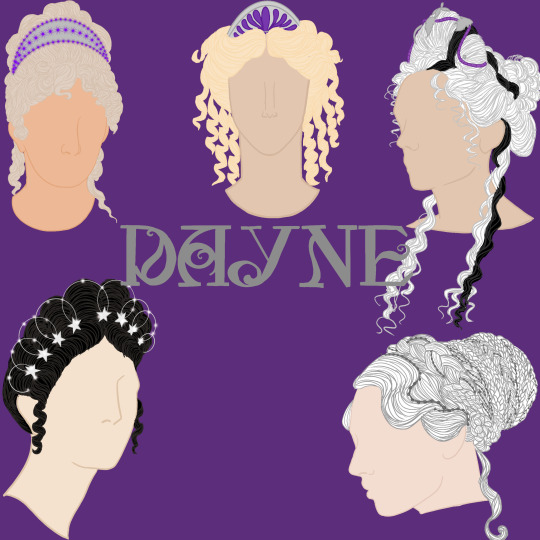
So the Dayne’s are dornish so they keep the Greco-Roman inspired hairstyles but as opposed to most other dornish houses who wear gold or copper they wear silver. I have a headcannon that I got from a fic that the dornish are expert glass artists so they wear slot of glass accessories, the daynes however opt for amethysts and tanzanite.
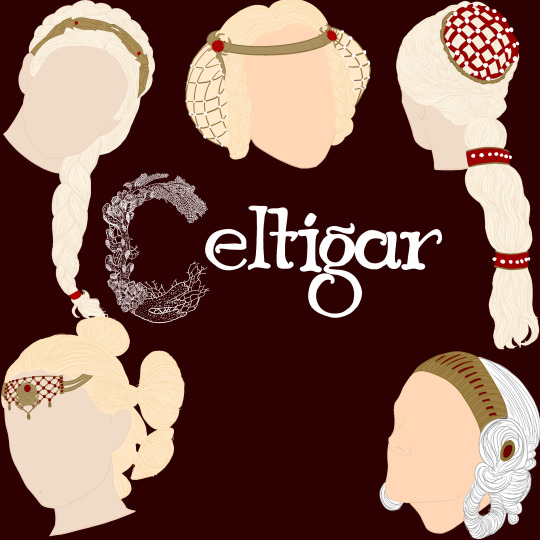
House Celtigar is of Valyrian descent, their hairstyles are unlike the the Targaryen’s however and have a strong stormlands and crown lands influence with elaborate updo’s and marine inspired, especially crustacean, headpieces. I hc that like the Velaryon’s they trade a lot so they are a richer house.
#asoiaf#game of thrones#a song of ice and fire#asoif/got#asoif fanart#asoiaf fanart#house targaryen#house of the dragon#house dayne#the sword of the morning#House celtigar#stars#greco roman#fantasy hair#hairstyle#old valyria#high valyrian
358 notes
·
View notes
Text
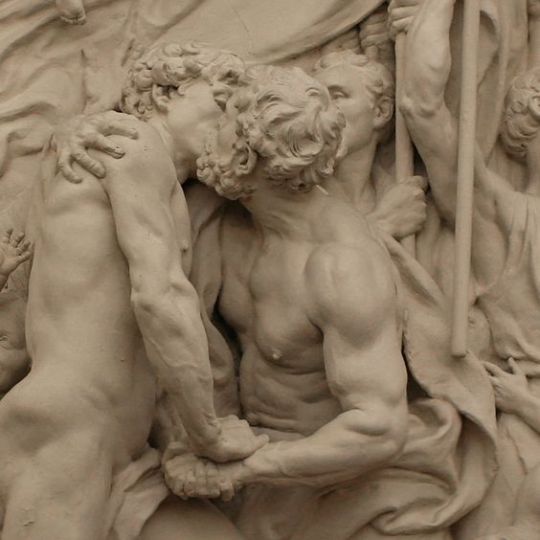
505 notes
·
View notes
Text
On top of everything else going on in this olympic cycle, Mijain Lopez is tearing through the +130kg Greco-Roman category. He's on track to win his fifth consecutive gold medal, meaning he's been wrestling at a world class level undefeated for over 20 years straight. And this morning, in his semifinal match, he pulled off something crazy.
For initial context, a standard wrestling turnover generally goes like this:

The top wrestler tries to get a solid grip around the bottom wrestler's waist, and hoist them over onto their back. Generally once the grip is established, all the bottom wrestler can do is try to block the turnover from happening.
However. When Lopez starts from the bottom later in the match, something else happens:

With one hand, he pushes his opponent off balance and breaks out to reverse the position. Reminder that these men are OVER 130kg, or 286 lbs, and Greco-Roman requires some of the greatest pure strength of nearly any combat sport. To just push one of these guys over while theyre trying to throw you is absolutely bonkers.
Mijain Lopez is already the most decorated male wrestler ever, but tomorrow he's going to wrestle in the Greco-Roman Finals to secure the 5 consecutive golds.
#wrestling#olympics#2024 olympics#paris 2024#greco roman#i rlly couldnt just post the gif i need everyone to know how crazy this is in context#no one goes this long and still looks that good its wild and rlly rlly cool to watch
144 notes
·
View notes
Text

Diana Awakening Apollo | Carl Bertling
Best painting of them two so far. Also, I'm really glad that it's Artemis and Apollo. If they would've been Selene and Endymion I would've commit arson.
80 notes
·
View notes
Text

Statuette of Bes with Horus and pot
The dwarf Bes stands with his legs apart, with a statuette of Horus on his left arm and a pot under his right arm. His overlong phallus hangs down between his legs.
The figure belongs to the group of so-called Faiyum terracottas. They are part of the religious household, children's toys, but also cult symbols, grave goods, pilgrimage images, votive offerings and magical objects to banish evil forces. They can be found in houses, graves and sanctuaries.
Graeco-Roman Period, 3rd century BC to 3rd century AD. Now in the MKG Hamburg. 1989.526
56 notes
·
View notes
Text
The story of Callisto and Artemis in the style of Hades (because I’m delusional).
I think they were lovers (Ovid says otherwise but the ancients hit patrochilles with the “historians say they were best friends” beam so….)
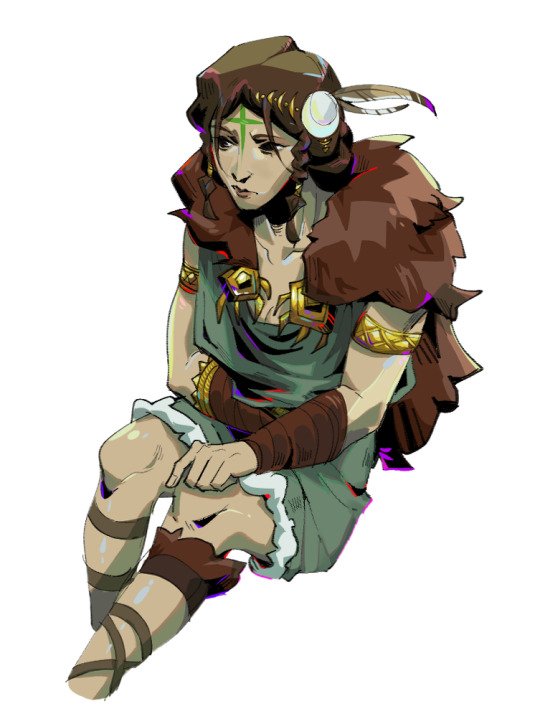
First meeting:

Callisto’s thoughts on Artemis:
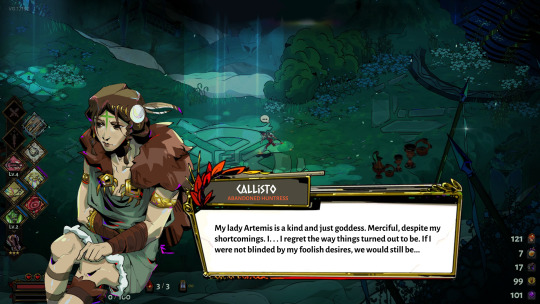
Callisto’s past:
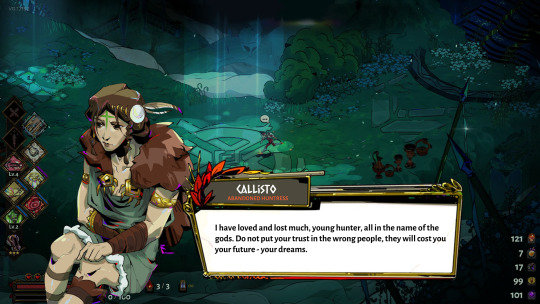

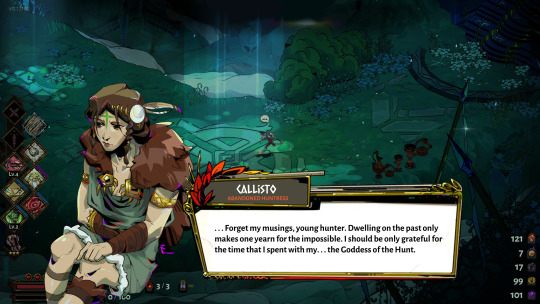
I like to think that Callisto begged Zagreus to set up a final meeting with Artemis to make amends and say her goodbyes — for closure she says… it’s probably time for her to let go of the past and for her to breathe a little… right?
#hades#hades game#hades fanart#callisto#Artemis#greek mythology#greco roman#wlw solidarity#im afraid lesbians stay losing 💔💔#greek tragedy#hades supergiant
477 notes
·
View notes
Text
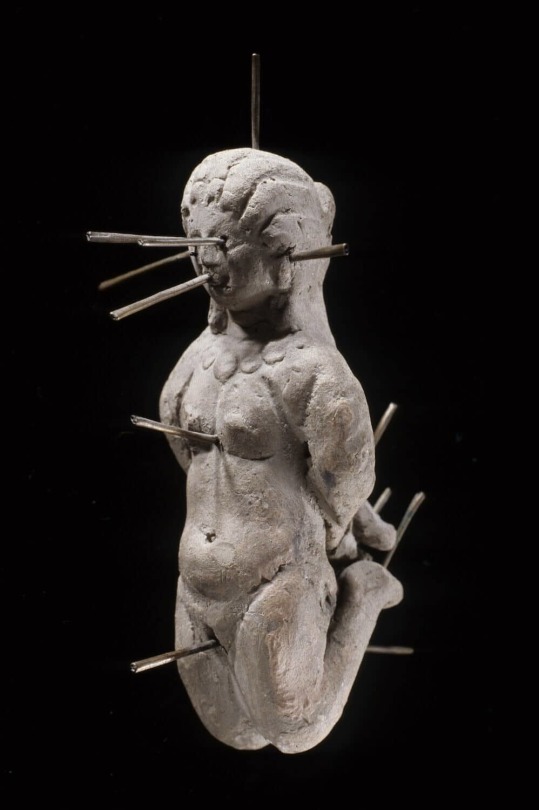

Greco-Roman curse doll
2nd century CE
#the word voodoo shouldn’t be thrown left and right like confetti by the way#let’s start calling things by their name#these are called kolossos (s.) kolossoi (p.)#equivalent of poppet. not necessarily used for harm#though in this specific case#and to use a definition in english#an object/s or material/s used to cast a curse#more specifically a love one - love curses are a thing#and curse doll should be just about right in English#there’s probably another dozen more accurate terms that still wouldn’t involve voodoo#this is called a testimone di fattura in Italian#translates to something like curse witness#ancient rome#greco roman#archeology#curse#hex#ancient curse#history#esoterica#esoterism#occult
847 notes
·
View notes
Text

Arnold Schwarzenegger Scrapbook - FACTORY Fanzine
#greco roman#arnold schwarzenegger#factory fanzine#factory scrapbook#scrapbook#Muscle#bodybuilding#leather#newspaper#vintage physique#arnold scwarzenegger scrapbook#factory fanzine scrapbook#ephemera#notebook#vintage#icon
59 notes
·
View notes
Text

When the Greeks sacked Troy, Aeneas retreated to Mount Ida, carrying his father Anchises on his shoulders and carrying his son Ascanius. His wife Creusa died in flight. He reigned for a time in Ida, then undertook a long voyage across the Mediterranean.
This Trojan hero went through several adventures in which different deities participated including his mother, Venus (Afrodita) . After his father's death in Sicily, a storm blew him astray and washed him onto the shores of Carthage.

Aeneas tells Dido the misfortunes of the Trojan city. Oil on canvas by Pierre-Narcisse Guérin (1815) Louvre, Paris.
With the intervention of the goddess Venus, queen Dido of Carthage fell in love with Aeneas and wanted them to marry, uniting their lineages. But Jupiter opposed it and sent Mercury to warn him that he must continue his journey and fulfill his destiny.
Dido, outraged at being abandoned , cast a curse declaring that her people and the people descended from Aeneas would be enemies. After this, she stabbing herself with a sword on a pyre.

Death of Dido. Oil on canvas by Guercino (1631)
Back in Sicily, Aeneas celebrated great funeral games in memory of his father, who appeared to him to tell him that he must go to Cumae and descend into the underworld. In Cumae, Aeneas succeeded in having the Sibyl open the gates of Hades for him.
There he met the shadow of Dido, but he also saw his father, who in the Elysian Fields revealed to him the glorious destiny of the people he was to found in Italy.

Aeneas and the Cumaean Sibyl. Oil on canvas by François Perrier (1646)
He reached the mouth of the Tiber and finally entered a city called Pallantium on the Palatine Hill. There, after going through several epic situations, he married Lavinia, only daughter of Latinus, king of the Latins, and founded the city of Lavinium, named after his wife.
Aeneas disappeared in the middle of a storm and was taken to Olympus and crowned by his mother Venus. His eldest son Lullius, from whom the Julii descend, founded Alba Longa the hometown of Romulus and Remus.
According to Livy, Lullius is the son of Aeneas and Lavinia, and seems to distinguish him from Ascanius son of Aeneas and Creusa. Silvius, son of Lullius, succeeded him on the throne of Alba Longa. Dionysius of Halicarnassus is the one who says that Silvius was the son of Aeneas and Lavinia, and therefore half-brother of Lulilus (Ascanius)
Years later, Numitor, maternal grandfather of Romulus and Remus and direct descendant of Silvius would be king of Alba Longa

Roman bas-relief, 2nd century: Aeneas lands in Latium leading his son Lullius (Ascanius); the sow identifies the place to found his city : Alba Longa
Over time, coming into contact with civilizations in the Eastern Mediterranean, the Romans realized that while everyone else had legends of heroes, epic wars, and several divinities interacting with humans at each event, they only had Mars in their founding story; twins thrown into a river, suckled by a wolf in a cave, adopted by a humble shepherd. And one of the twins ends up dying in a fight with the other.

Romulus and Remus, suckled by the wolf, found by Faustulus on banks of Tiber. Fresco by Giuseppe Cesari (1568-1640)
Augustus commissioned the great Roman poet Virgil to create a epic worthy of Rome, but without annulling its legendary founding history.
Through the Aeneid, Rome acquired a prestigious past; a mystical explanation of the three Punic Wars and the destruction of Carthage. Julia gens obtained a divine origin, giving even more legitimacy to the ruling dynasty. Furthermore, this epic exalts the Roman virtues that Augustus so wanted to restore and impose by law.
According to Roman historians, Augustus' sister Octavia faint from emotion upon hearing Virgil reading the Aeneid.

Virgil Reading the Aeneid to Augustus and Octavia. Neoclassical painting by Jean-Joseph Taillasson, 1787
In the story of the Trojan War as told by Homer, Aeneas appears as a secondary character, after heroes such as the Greek Achilles or the Trojan Hector. Meanwhile Virgil made him a protagonist in an epic that linked the fall of Troy and the founding of Rome.

The Siege of Troy. Oil on canvas by French School ( 17th century)
#ancient rome#history#mythological painting#oil painting#oil on canvas#fresco#the aeneid#roman empire#greco roman
39 notes
·
View notes